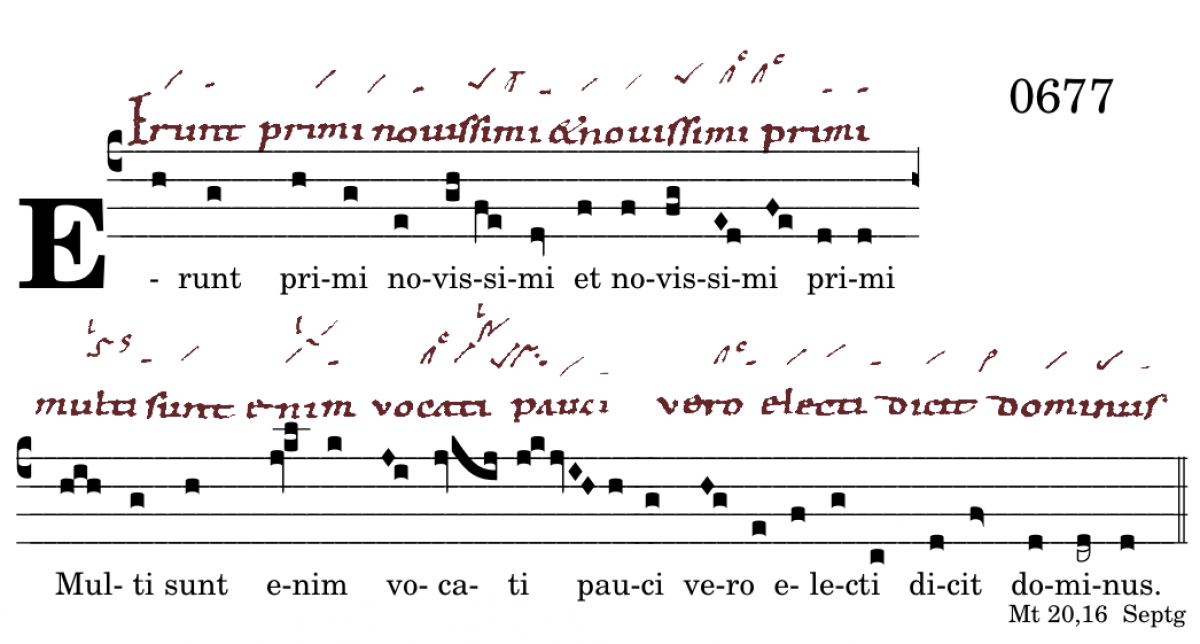🔘 IN GR TR AL OF CO xxxxx ✅ 2️⃣ 0️⃣ 3️⃣ 4️⃣ 5️⃣ 6️⃣ 7️⃣ 8️⃣ xxxxx AN RP IV alia
0677 AN Erunt primi novissimiModus 1
↖️
1TER de5 +
1FML supra
1TER conc
1INC VrgStr PPO, zur Quint transponiert, „multi“ TrcACC nkTrc! ~appl pro VrgStr.
1TER de5
Eine interessante Komposition: Die vier Centones werden nicht in der üblichen Reihenfolge, sondern sinngemäß benutzt.
Die ersten zwei Centones sind Feststellungen, die jede für sich allein stehen kann
• „Erunt primi novissimi“ Punkt. Daher 1TER de5.
• „et novissimi primi“ Punkt. noch härter 1TER conc. (in H durch die Clives etwas aufgeweicht).
• „Multi sunt enim vocati“ 1INC VrgStr. transponiert Quint nach oben! Inhaltlich der Anfang der Antiphon, aber selbst nur Einleitung zur eigentlichen Aussage:
• „pauci vero electi“ abermals 1TER de5. Der Absprug „sol-do“ erinnert an 1TER conc und verhindert einen versöhnlichen Schluss. „di-cit dominus“ Auch hier ist die versöhnliche Clv durch Cephalicus unterdrückt.
● Die Letzten werden die Ersten sein und die Ersten die Letzten
alle sind nämlich berufen, nicht alle aber auserwählt, spricht der Herr.
● The last will be first and the first will be last
For all are called, but not all are chosen, says the Lord.
1TER de5 +
1FML supra\
1TER conc
1INC VrgStr PPO, transposed to fifth, „multi“ TrcACC nkTrc! ~appl per VrgStr.
1TER de5
An interesting composition: the four centones are not used in the usual order, but in the same sense.
The first two centones are statements that can each stand alone\
- „Erunt primi novissimi“ full stop. Therefore 1TER de5.
- „et novissimi primi“ dot. even harder 1TER conc. (somewhat softened in B by the clives).
- „Multi sunt enim vocati“ 1INC VrgStr. transposed quint upwards! In terms of content, the beginning of the antiphon, but itself only an introduction to the actual statement:
- „pauci vero electi“ again 1TER de5. The ending „sol-do“ is reminiscent of 1TER conc and prevents a conciliatory conclusion. „di-cit dominus“ Here, too, the conciliatory clv is suppressed by cephalicus.
